The Strategy of Composition
Hugh Farrell
From Standing Rock to Lützerath, the struggle to defend the Earth continuously crosses over into the construction of the commune. Situating the battle to defend Atlanta’s forests within the collapse of the historical left and the rise of place-based or "territorial" forms of struggle, Hugh Farrell surveys the possibility of revolutionary organization in profoundly disordered times.
Other languages: Polski, Français
Reflux
We are living through a moment of terrifying social reflux. The minimal state protections put in place at the beginning of COVID have given way to renewed evictions and a broad political consensus in favor of interest rate hikes intended to tame inflation and rebuild market stability. However, since, much of this inflationary instability is driven by new working class purchasing power, this means that renewed market stability is tied inexorably to restoring the precarity of the poor, to reducing their share of consumption and breaking the job-seeking confidence that fed the Great Resignation, itself produced by the exceptionally taut COVID labor market.
Just as the crisis-bred confidence of the poor must be tamed, so the recent memory of vast anti-police struggles led by Black youth must be painted over with delirious panics over Critical Race Theory and Defund the Police, both as phantasmic as a mythical crime wave. Defund the Police, which appeared irrelevantly moderate during the George Floyd Uprising, now appears intolerably extremist thanks to the collusion of 10,000 talking heads who chattered their way through the entirety of 2022, even as US police continued to kill people at an increased rate.1 Since one good panic begets another, these then fed a renewed hysteria about grooming, which offers the barest fig leaf for a renewed exterminationist drive directed against LGBT — especially trans — people. Propelled by figures like Elon Musk (himself working precisely to restore conditions of profitable speculation), this drive has been so shameless that it barely missed a beat when one of its foot soldiers murdered five people in Club Q, a Colorado gay bar.
Amid this period of fear and reflux, the movement to defend the Atlanta forest — alongside recent efforts to defend the village of Lützerath against its destruction by mining giant RWE (from which the accompanying images here are taken) — stand out as bright exceptions. While the ostensible aim of both struggles lies in protecting specific territories, they have also succeeded in challenging the more general terms of our current period of reaction. While my focus here will be on the struggle in Atlanta, the logic of composition outlined below may also help to illuminate other ecologically-minded insurgencies across the globe.
Of the 600 total acres being contested by the movement, 380 are slated for development into an urban police counter-insurgency training center, including a mock Black neighborhood, while the remaining 40 acres — currently a city park — have been traded to a film industry soundstage developer through an insider deal. The slogan for the movement has thus become, “No cop city / No Hollywood dystopia.”
While police defunding has become anathema across the US political spectrum, by blocking the construction of a training facility needed to raise the morale and update the tactics of a department shattered in 2020, the Defend the Forest movement is also defending and extending the memory of the George Floyd Uprising.
The movement is based less on protests — which do still occur frequently at construction company offices and in downtown Atlanta, where a group of elementary school children regularly demonstrate in solidarity — than on forest raves and a patchwork of distinct camps. These various camps allow for a range of people to engage in differentiated ways, while making the movement harder to map and evict for the authorities. Young people from across Atlanta and the country circulate through the forest, some staying for a few nights while others have lived there for more than a year. Rolling Stone recently interviewed a young person who quit their Midwestern office job at the tail end of the Great Resignation in order to move to the forest, for reasons that seem obvious to many people of their generation: "It seems simple. Work is hell. The forest is beautiful. The goal of protecting what sustains us and destroying what destroys us is the most important thing.”2

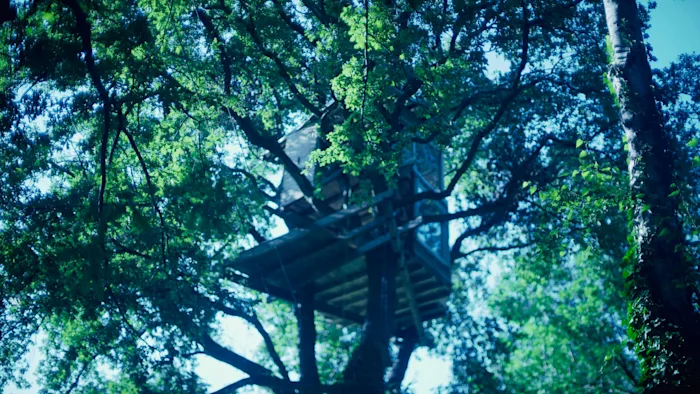
The forest occupation is hardly utopian, with frequent conflicts within and between camps. Some neighbors opposed to Cop City, for example, are understandably upset by obscene anti-police slogans daubed on a parking lot occupied by the movement, since their children use the forest too. And yet, the inability to fall back on the mediation of institutions has forced participants to develop customs and practices of compromise and conflict resolution. Further, the forest has become a refuge from the wave of reaction sweeping the country. In a recent profile by David Peisner, one transgender participant accounted for the “overrepresentation” of queer and trans people in the forest in this way: “They’re already marginalized and have trouble operating in other spaces, so they’re more likely to come to a space like this. Also, trans people helped build this community, so of course they’re going to make it more inviting for other trans people.”3
While remaining riven by contradictions and difficulties, the Atlanta forest has become an inverse image of the national political situation, an exception in this period of reflux. One of the movement’s truisms, frequently cited to account for its success, is that it is “decentralized and autonomous,” making it harder to police or co-opt, and creating space for multiple modes of engagement. Yet Peisner is right to point out that this structurelessness creates its own kind of rigidity and inertia. He quotes a forest defender named Wiggly who acknowledges that in a movement like this, “the way you’re moving is the way you keep moving.”4 Decentralization and autonomy are not sufficient principles in themselves to account for the movement’s simultaneous resilience, creativity, and chaotic, collective intelligence. And in fact, Wiggly’s words would just as well describe America’s committed lurch into decline and crisis; in an already anarchic epoch, decentralization and autonomy are hallmarks of most political forces, and hardly sufficient as a liberatory horizon. Beneath the movement’s commitment to remaining “decentralized and autonomous” lies another active principle, which has emerged in territorial struggles and situated conflicts around the world: composition. In what follows, I will draw on Endnotes and their interlocutors to define the broader coordinates of our current, precarious moment and why it poses the “composition problem” on an epochal scale. Then I will return to territorial struggles in order to understand composition from the opposite direction, as a situated strategy for organizing that is distinctive to our contemporary conjuncture.
Orphans
In “Onward, Barbarians,” their magisterial balance sheet of the era of COVID and anti-police rebellion, Endnotes offers a framework for understanding the vast fluxes of popular insurgency and anxious, bloody reaction within our anarchic present. For Endnotes, precarity, the collapse of political legitimacy, and an accelerating welter of confused identities and struggles all take place “on the ground of a stagnating capitalism.”5 A pie which is no longer growing not only provokes terrifying competition over steadily shrinking portions, but also undermines progressive claims, whether of the potential for market-driven development, the historic mission of the labor movement to deliver security to workers, or of national communities ever offering a shared better future. Monsters multiply, competing to foist blame onto migrants and trans people, whether as part of the direct competition over portions of the pie or to displace confusion and fear into new panics.
In this context, insurgent movements are lost children, orphaned from the organizational tradition of the historic left and bereft of the labor movement’s past legitimacy, shed over decades of concessions to the bosses and acceptance of growing employment precarity. Further, movements are ensnared in a “confusion of identities,” as various sectors of society compete for resources and slowly lose coherence themselves, as evidenced by the gap in Black leadership which the official Black Lives Matter organizations have dramatically failed to fill. Yet, Endnotes argues that this confusion, and this orphanhood more broadly, are also productive, creating a field of experimentation which, for these precise reasons, is difficult to represent and govern. Without an extant tradition or leadership to draw on, movements exist in a permanently improvisational mode — creative, ungovernable, and yet internally unstable. This poses what Endnotes calls the “composition problem,” in which contemporary movements can assume no automatic, shared basis, and thus face new challenges. Movements must produce their own basis for organization and new tools for welding together the increasingly heterogeneous sectors produced by the precarious present — as this process becomes self-conscious, it becomes composition as a strategy.
In Hinterland, his survey of the contemporary “terrain of class and conflict,” Phil Neel proposes a peculiar solution to the composition problem, one especially suited to the massive fluxes of movement now regularly produced by the destabilizing global order. He argues that reactionary forces are propelled by “oaths of blood,” in which racial and traditionalist myths nourish new communities of exclusion intended to offer security amid generalizing stagnation and destabilization. Opposed to this, participants in insurgent movements make no exclusive claim, and instead make an inclusive pledge to insurgency itself, an “oath of water” to Marx’s “‘Party of Anarchy’ that seems to seek nothing but further erosion, the growth of the flood.”6
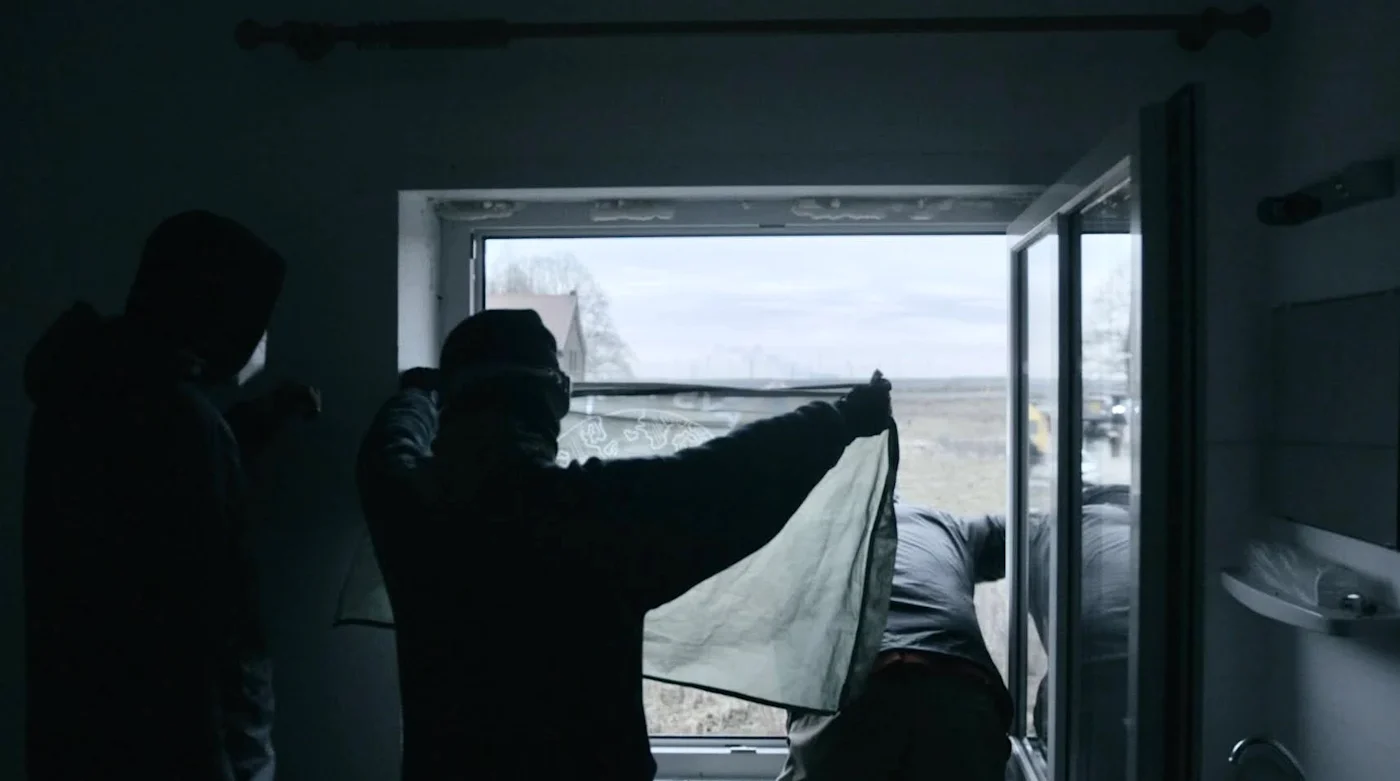
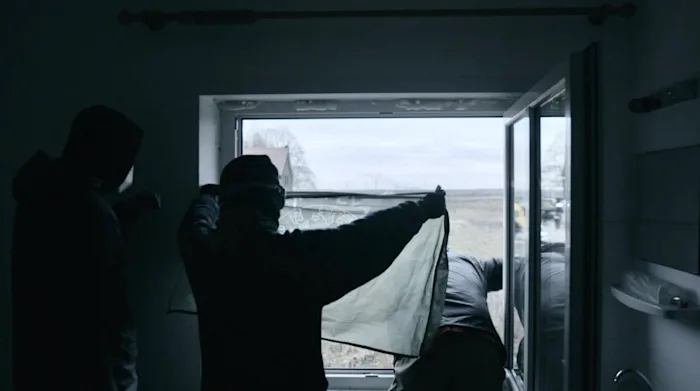
This framework has both experiential and ethical force; it responds to the composition problem on the level of the epoch. Anyone who has participated in a 21st century revolution is familiar with the euphoric solidarity that Neel evokes, as well as the lack of a broader horizon orienting that solidarity. Writing within the absence of this horizon, or more optimistically, in its infancy, Neel understandably emphasizes a “fidelity to the unrest itself,” in a way which ethically orients us towards inclusive communities and a negative project based on the destruction of the already-failing capitalist world.7
However, oaths of water tell us very little about how to organize, and they represent only the ethical distillation of those sequences of rapid erosion which occur during vast movements and uprisings. These insurrectional sequences hardly make up the majority of our lives, even in the context of capitalist stagnation and growing instability. Thinking only from within these moments constitutes its own distorting trap, risking a politics of urgency and sacrifice. Neel, for his part, fears the opposite — that outside of revolutionary sequences in which the oath of water is able to constantly expand, the practice of revolutionaries will be distorted. Neel disparages efforts to sustain long-term anti-capitalist spaces: “there is no true ‘autonomy’ from the world of capital, only fidelity to its destruction.”8 His anxieties go further, as he ambivalently aligns these spaces, surviving beyond punctuated social eruptions, with “the nationalist or proto-nationalist enclaves of populist movements in the global countryside,”9 suggesting a further slippage towards exclusive communities at least akin to those founded on oaths of blood.
Neel is taking aim at an anarchist attachment to “small-scale moments of self-reproduction in squats and occupations.”10 These are often conservatively-minded efforts to hold onto a limited area of freedom on the part of groups that have already been constituted, whether by shared subculture, ideology, or an experience of movement participation. The goal in these cases is to hold on, to survive in a localist or ideological mode. Unfortunately, Neel conflates these limited, small-group experiments with a form of struggle — territorial defense — that grows out of the contemporary epoch just as surely as the rapid, erosive insurrections with which he is primarily concerned.
Territory
Even as capitalist growth slows, it is also increasingly clear that this growth drives the climate crisis. The world is not just stagnating, but it is also warming, and the economic instability driven by the slowing growth machine is neatly mirrored by the climatic instability often evoked under the epochal banner of the “Anthropocene.” This dynamic drives the politicization of ecological questions alongside economic questions, to such an extent that, as Kristin Ross has declared, “defending the conditions for life on the planet has become the new and incontrovertible horizon of meaning of all political struggle.”11 Beneath the drum beat of horrors in this period of reflux is the always-present awareness of the worsening climate crisis, highly resistant to any reformist amelioration, now joined by the parallel, grindingly intractable COVID crisis.
On the one hand, the climate crisis sharpens the sense of ecological loss in every local development controversy, at the same time as it raises the stakes. On the other hand, an entire generation facing high unemployment rates and the collapse of institutional legitimacy has sensitized itself to these losses and has, especially since the 2008 housing crisis, responded evermore sharply to formerly local controversies. Finally, the interweaving of the experience of anti-racist and anti-police movements helps push the latter beyond their historical limitations within an “environmentalist” framework, with the result that, as histories of colonization and state violence are revealed, these struggles now become territorial, pushing the questions of land and power to the fore.
The largest contemporary territorial struggle in the US has so far been the blockade of the Dakota Access Pipeline. At its height, it grouped together 10,000 people in a decentralized constellation of camps on the Standing Rock Sioux reservation. Native memories of colonial violence swirled together with grievances against contemporary colonial extraction and the risk of local oil spills, all framed by a widely-shared certainty that the carbon economy undermines the conditions of life on earth. The No-DAPL struggle was the largest political mobilization of Native people in generations, many of whom remain outside the scope of the settler nation. In addition to necessitating serious experiments in social reproduction outside the circuits of capitalism, the movement also engaged in a forceful exclusion of the police and military from the camps, thereby resurrecting the specter of autonomy.
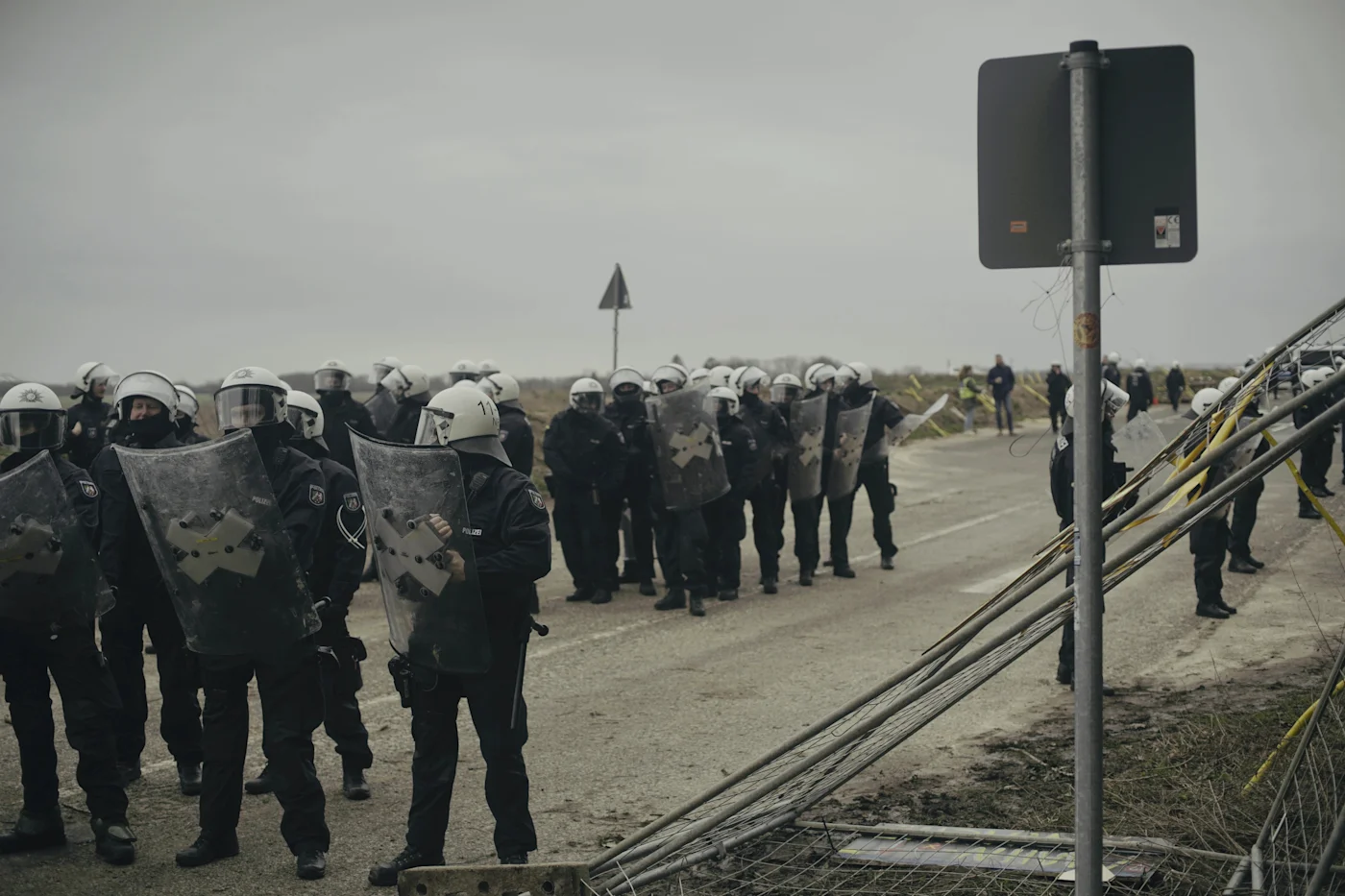
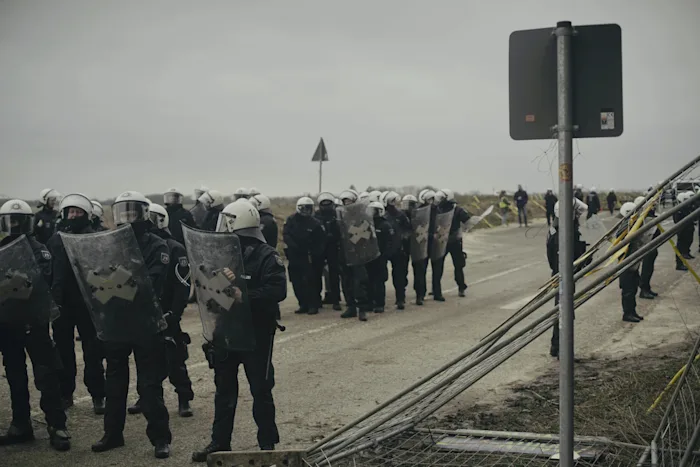
The autonomy built at Standing Rock, however, bore no resemblance to the static, closed refuges criticized by Neel. There was a vast and constant flow of bodies, goods, ideas and strategies through the camps, fed by multiple social strata each of which arrived with their own distinct experiences of being rendered surplus to the economy. Native people, substantially excluded from the waged economy or relegated to its lowest, rural rungs across widely-dispersed reservations, used the Standing Rock camps as a space of regroupment. Settlers, disproportionately young and hailing from a generation defined by precarious employment, flocked to the camps to support Native claims, to fight a carbon economy that holds them hostage as well, or simply (for many) because they had nothing better to do. While their exposure to precarity, as service workers or indebted college graduates, is structurally distinct from that of Native people confined to impoverished reservations, the end of Fordist career certainties allowed thousands of settler youth to spend months at a time camping in the plains of North Dakota, building defensible structures, participating in ceremony, or fighting the police. Why not quit a Starbucks job, which lacks security or any possibility of advancement, and live almost without money? How else can we renew that ethical substance which long ago disappeared from the normally-functioning metropolis?
The demographic parallels — the encounter of the racially excluded and the newly precarious — between riots and blockade camps led Joshua Clover to assimilate the two in his Riot, Strike, Riot.12 For Clover, both belong to that category of antagonism he terms “circulation struggles,” which are born out of capitalist stagnation, slack labor markets and the growing importance of circulation vis-a-vis production. However, as Ross pointedly reminds us, although both are undoubtedly born of a common conjuncture, they have distinct logics and temporalities which we would do well to distinguish.
Transvaluation
As Ross rightly insists, a key element of territorial struggles is a “transvaluation of values.” Whereas Neel is right to claim that, in the flood of insurrection, it is unrest itself that binds participants together, territorial struggles differ in that there is something worth defending. Paradoxically, though, it is often only through the struggle that participants come to feel this confidently, that they are able to assert that a place can be “given value according to a measurement that is different from market-value or the state’s list of imperatives, or existing social hierarchies.”13
The defense of a territory is a constructive process that necessarily includes more people as it unfolds, yet which proceeds through a completely different temporality than that of riots or mass uprisings. Alongside Standing Rock, a paradigmatic example is the Zone à Defendre (ZAD) at Notre-Dame-des-Landes. The ZAD is a mass occupation that successfully blocked the construction of a second airport outside Nantes, France. The territorial phase of the struggle took shape gradually over a ten year period from 2008 until its eventual victory in 2018, and has since continued to nourish collective experiments on the Zone to this day.14 The participant research collective Mauvaise Troupe, which has written extensively about territorial struggles across Europe, emphasizes their sequential logic:
It quickly became apparent that defending these wetlands was inseparable from inhabiting, nourishing, and building forms of resistant infrastructure within and upon them, and that all of these efforts were at odds with the existing economic and governmental structures.15
Here we glimpse the complex temporality of composition, which extends both backwards and forwards, combining speed and slowness. On the one hand, transvaluation and defense tend to nourish each other, as the struggle to defend demands the production of new truths and collective intelligence. In this way, the exigencies of defense instill the impetus and urgency for the steady growth of a movement. At the same time, territorial struggles are hybrid temporalities that resurrect and continue lineages of past antagonisms, sometimes decades or centuries in the making. The opposition to the airport at Notre-Dame-des-Landes developed over the course of 40 years before its territorial occupation in 2008, while Standing Rock drew upon centuries of anti-colonial struggle. Although propelled forward by a creative impulse, territorial defense is also slower than it may at first appear.

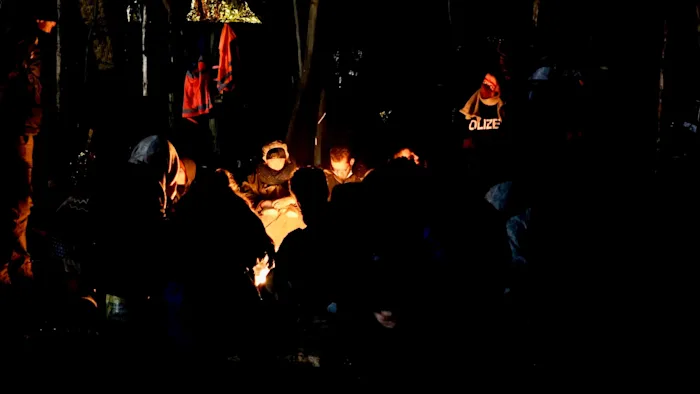
Whether we consider Notre-Dame-des-Landes or North Dakota, in each case it was the contemporary conjuncture of economic and climactic crisis, alongside the new political conditions defined by systemic delegitimation, that allowed long-duration struggles to scale up. This delegitimation is key for understanding the emergence of the compositional style of struggle. Over the past half century, the dominance of the proletariat has eroded both from without and within. Externally, the proletariat has been shrunk and scattered through capitalist reorganization and precarization, during the same period that it was challenged internally by feminist, anti-racist, and anti-colonial critiques, exposing always-latent and unresolved contradictions concealed within the identity of the working class, which now finds itself embedded within a much more flexible capitalism than that of the Fordist factory period. If the left can no longer claim to extrapolate a stable program, this is not due solely to the watering-down of its supposedly “core” Marxist values by postmodernist criticisms of neoliberalism, but rather because, at a material level, there is no longer any reasonable claim to an homogenous, shared experience that could serve as its foundation.
Wilderness
The conditions under which we now organize are those of what Andy Merrifeld has called the “wild city,” the “deregulated city, the downsized city.”16 This is a capitalist reproductive circuit which has shed the stable character required for stable subjects to advocate in ordered ways for a given portion of social goods. Atlanta is a paradigmatic New South example. Under such conditions, the role of the left can no longer be to teach people fixed truths and bring them into a stable coalition based on a pre-existing program. Political formulations based on a mass identity are no longer possible. Any possible program or strategic platform can no longer be unidirectional, but must instead be permeable, i.e., constitutively open to their outside, and perhaps even defined by it. In practical terms, this means that whatever our stakes in the fight are, we must be interested in other people's experiences too, as well as their own reasons for being there. If there is a truth on which our politics depends, it cannot be the “scientific” truth of the old orthodoxies, but must be situated in an irreducibly intersubjective space. From here on out, all truths are situational.
The grassroots left after the fall of the Berlin wall recognized this implosion, yet failed to overcome it. On the one hand, during the 1990s and 2000s, the activist strategy for resolving differences and maintaining coalitions within social movements was consciously post-programmatic and flexible. It didn’t look to “scientific” dialectics to resolve contradictions between sections of the movement, nor did it appeal to the existence of a natural or historical vanguard. Rather than let differences tear it apart, activists in the anti-globalization movement proposed that summit protests be organized in accordance with a principle they called the “diversity of tactics": all the sections of the movement can act as they see fit, separately. The problem with this approach is that it effectively abandoned the possibility of a collective strategy or mode of organization. In order for each section of the movement to enact its tactical program during a mobilization, it must enjoy (according to the canonical “St. Paul Principles”) a “separation of time and space.” As a result, whenever any movement-wide discussion would occur, the focus would be on allowing each tactical program to be enacted without getting in each other's way, rather than on winning in a broader sense. This liberal concept of “autonomy” as tolerance-amidst-separation mirrors the atomized structure of neoliberal citizenship. In the end, it allowed the most conservative sections of the movement to cunningly reestablish their dominance through the back door. In 2003, AFL-CIO operatives, in a painful example, used “diversity of tactics” as a justification to isolate a large black bloc in a distant corner of Miami, miles away and hours before the mass protests against the Free Trade Area of the Americas, allowing police to crush and arrest hundreds of anarchists.
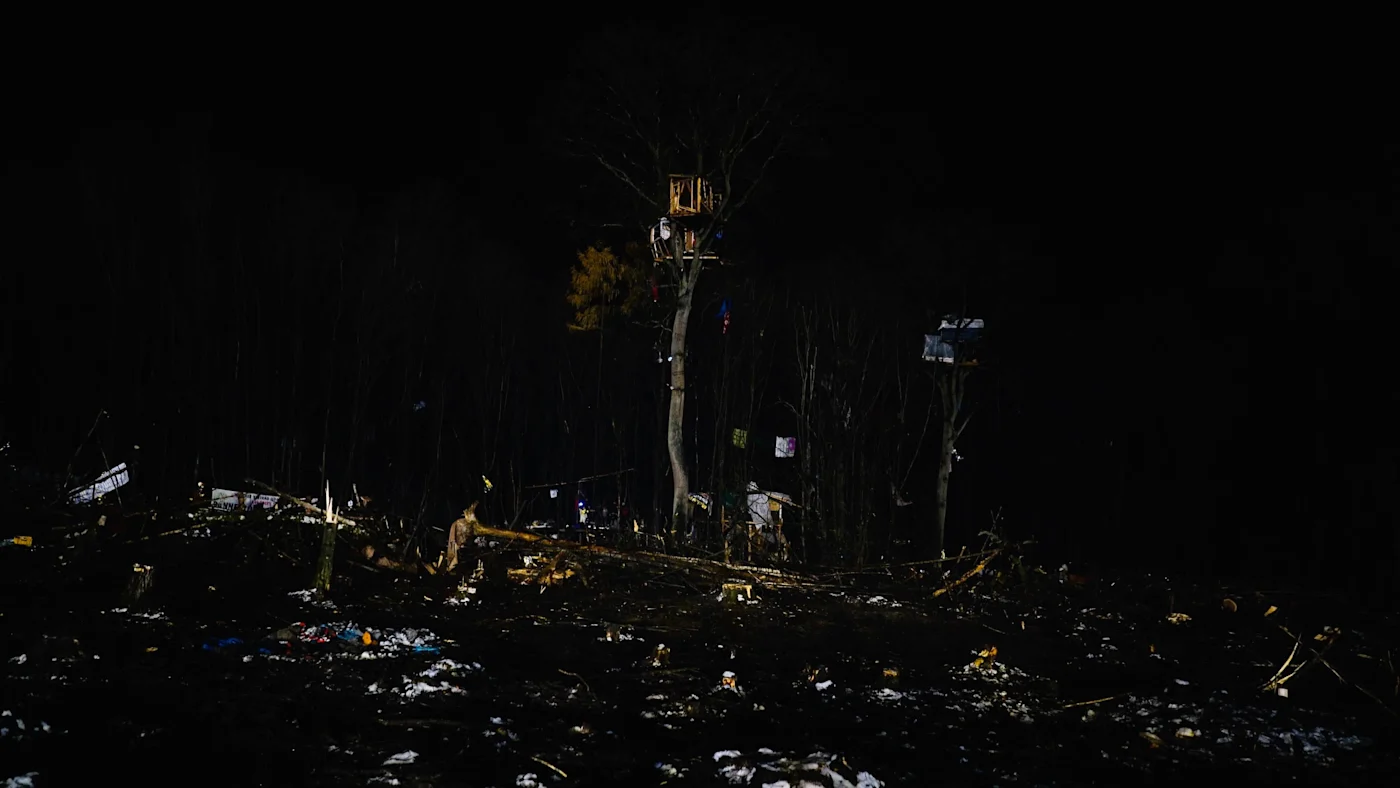
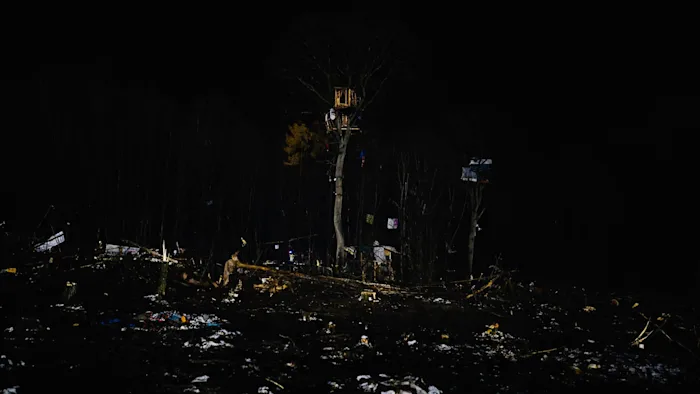
Today, the legacy of the 20th century left bequeaths to us a sad binary: on one side, there is the classical labor movement’s singular program, with its dialectical resolution of difference, and its dependence on the leadership of a now-extinct mass subject; on the other, the contemporary activist approach, itself based on the prioritization of tactics, the non-resolution of difference, and the abandonment of any strategic horizon of victory.
Composition as a strategy positions itself between these two extremes. The negative rationale for its development resides in the disappearance of any leading identity, which forces movements — propelled as they are by the contradictions of capitalist society — into a productive crisis.
However, it also has a positive rationale. Whereas the programmatic approach to struggle relied upon dialectical resolution of conflicts — i.e., the assumption that, through the course of the struggle, a synthesis would emerge that would produce a new sort of unity — the method of composition proposes that the multiple segments of a movement remain multiple, while simultaneously weaving the necessary practical alliances between them. Given the failure of any given identity to convincingly assert social leadership within movements, the various social figures that make up contemporary struggles are faced with a choice: either they can remain in autarchic non-relation (tolerant separation), or else, if they wish to restore a horizon of victory, they must develop a relational approach allowing them to work together across their differences, and this inevitably means accepting compromises. “Composing” as a practice means holding together and expanding the relations between social sectors of a struggle, and “composition” as a strategy refers to the assumption that a collective victory under current conditions is only possible provided our movements find ways to tease out such collaborative meshworks across and between various social identities. However, this is not merely a coalition of different subjects, each of whom remains the same throughout. In order for this strategy to function in practice, in order to maintain the composition of a movement, each of its component parts must be willing to step away from their identities to some degree. The aim here is not to enter into some kind of new synthesis, erasing particularity; rather, the assumption is that, in order to win, each segment must commit to a contextual form that invites all the other pieces of the movement to destabilize the identity and commitments that they may otherwise have held in normal capitalist politics. In this way, composition produces not “social unity” but a practical machine fueled by the partial desubjectification of its constituent parts.
For example, as the struggle against the Dakota Access Pipeline grew over the course of 2016, it went from a narrow movement of the Standing Rock Sioux for their own territorial rights to one in which other Indigenous groups and non-Indigenous actors also felt implicated, for their own material and political reasons. Acknowledging this fact does not require that we subsume or disregard the interests and position of the Standing Rock Sioux; the point is rather that it was the compositional logic of the movement that pulled all these components into relation with each other, leading to a greater horizon of victory than any could imagine on their own.
Let us now return to the case of Atlanta’s Defend the Forest struggle. As Kristin Ross observes, composition struggles tend to produce a distinctive social base: “essentially a working alliance, involving mutual displacements and disidentifications, that is also the sharing of a physical territory, a living space.”17 It seems that such a formulation describes the Atlanta forest precisely. The movement is not simply “decentralized and autonomous,” which would only evoke a series of disconnected and indifferent elements scattered however far from each other. Instead, the constellation of camps in the forest, as well as the various social segments that populate the movement — the elementary schoolchildren and their parents, visitors from outside Atlanta, the ravers, the community organizers and canvassers in the surrounding Black neighborhoods, trans activists and naturalists — are as marked by their connections and their relations as much as by their decentralization. To experience the movement is not merely to experience one’s own distinct view upon it, or one’s own menu of practices within it, but also to feel claimed by the wagers, risks, and contributions of all the other component pieces as well, with whom one shares a common fate.
Separation is the norm in a hyper-alienated and violent society like America, and even more so in radical politics. The fact that such a range of components as listed above, and the range of methods they each implement, are connected in a struggle is therefore an exception to the norm, and requires constant suasion. To put in terms borrowed from the Spanish radical collective Precarias a la Deriva, maintaining the transversal linkages that bind these components and methods requires an “affective virtuosity” characteristic of contemporary work and politics.18 A huge proportion of the movement to defend the Atlanta forest takes place outside the forest itself, meaning that activities with radically different characters must be constantly sutured together, between the varying rhythms of neighborhood canvassing, protests downtown, and life in the camps.
The challenge of building effective coordination in a hyper-separated society in the absence of any larger positive horizon is vast. Composition is the mode of organization in profoundly disordered times. As a poetic and compositional account from Minneapolis during the first days of the George Floyd Uprising put it: “We combine without becoming the same, we move together without understanding one another; and yet it works.”19
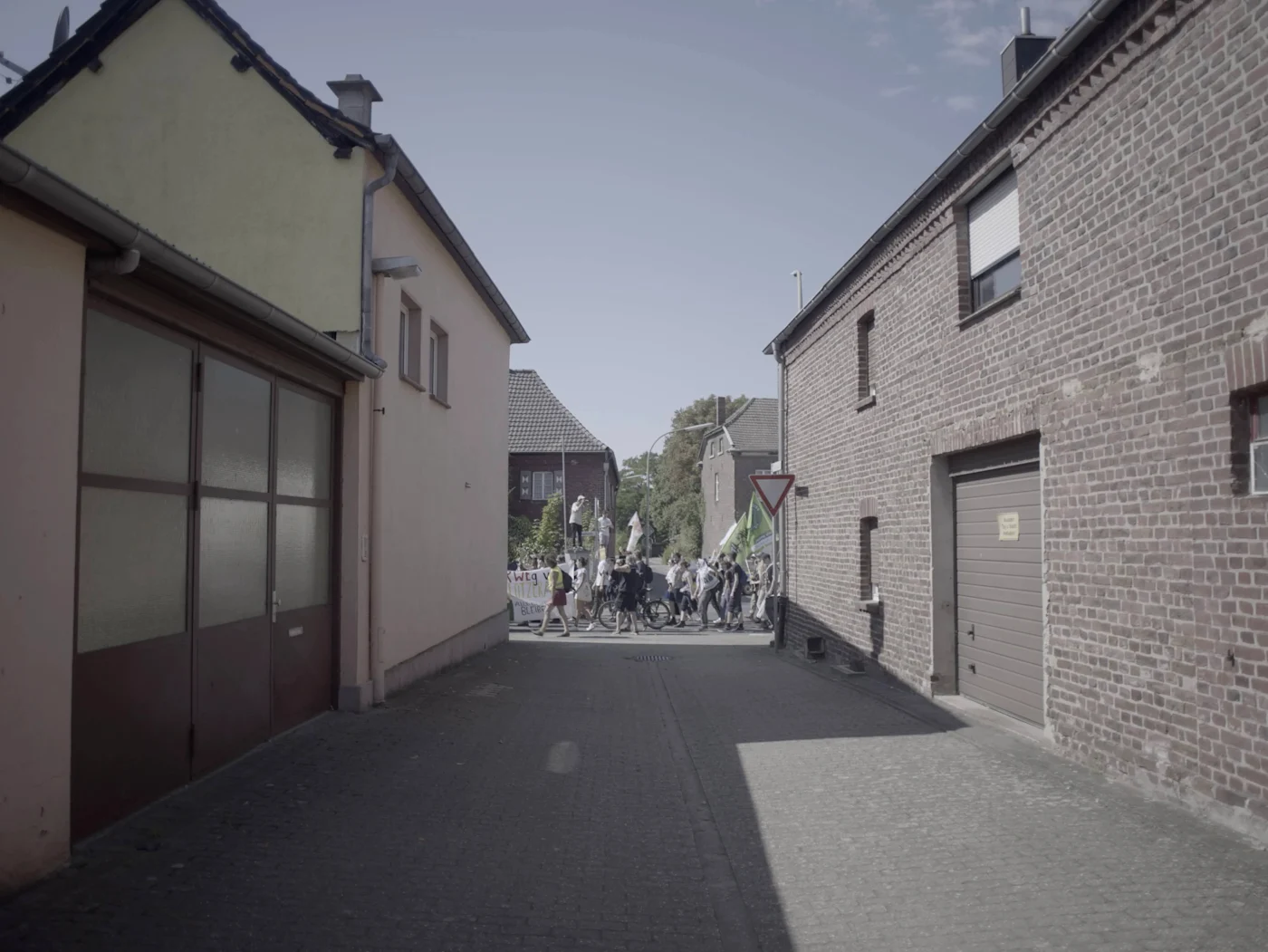
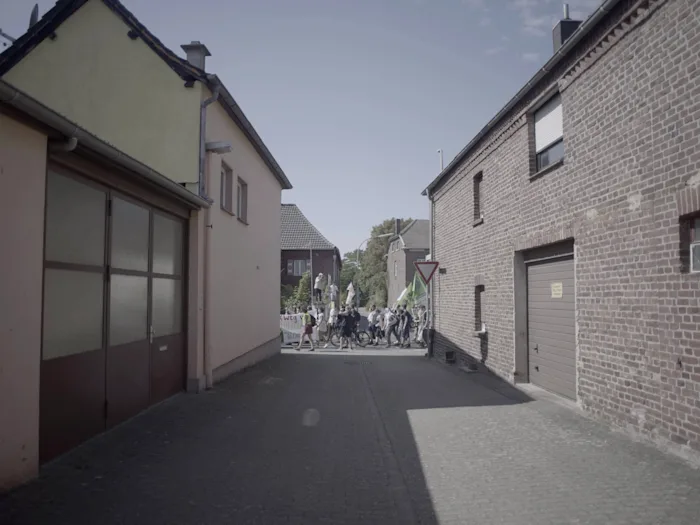
Under these hazy conditions, it might be helpful to articulate a partial list of compositional methods at play in the Atlanta forest:
Multiple camps have proliferated, which, although marked by starkly divergent cultures and populations, have not opted to remain tolerantly separated, but instead have continuously sought to remain connected, in part thanks to the work of informal liaisons who attempt to resolve differences in real time as they surface.
The movement’s open approach to political methods stresses not just a diversity of tactics, but their potential interlinking. This allows lawsuits to coexist with regular clashes with police at the edge of the forest, and for participants from a dizzying range of American subcultures (birdwatchers, ravers, academics, activists, history buffs, punks, tenderqueers, carpenters, etc.) to enter the movement and define their own participation within it based on their own resources and desires.
By maintaining an open approach to the construction of the camps, the movement prioritizes pragmatic and hands-on activities. In this way, it deactivates ideological questions and divides, allowing for the type of disidentification described by Ross. This facilitates creative engagement and reduces the insularity of activist practices. The new kitchen building built in the parking lot-turned camp, dubbed “Weelaunee People’s Park” (destroyed by police and corporate bulldozers December 13 2022, and already being rebuilt) has played exactly this role, hosting potlucks every Wednesday throughout the autumn of last year.
An emphasis on land restoration and building places of life contributes to a broad transvaluation of values, articulating a new basis for organizing and coordinating in defense of this particular place, in its singularity. Efforts by forest defenders and many others to unearth the murderously racist history of the Old Atlanta Prison Farm builds new connections between past and present struggles. Planting fruit trees and edible perennial herbs reveals the sustaining power of the territory. New traditions emerge specific to the forest, and provide a basis for new forms of connection and kinship.
Multiple components display a compositional intelligence, investing serious political effort and affective virtuosity to resolve conflicts and draw in new components. For example, a controversy over the obscene graffiti slogans has been slowly addressed through conversation and debate, and importantly, through the constant addition of new slogans, tags, and art, rather than through a fruitless effort to simply censor the tags (in whose name could the censorship occur?). Composition necessarily functions less through internal correction within a coalition, than through the positive process of linking together new elements — it is a “yes, and…” More importantly than the tags, others have worked to support the Muscogee people, indigenous to the region, re-entering the forest two centuries after their expulsion, leading to important rituals, encounters, and transmission of knowledge about the territory.
A sense of patience and taking the movement’s own time has meant not only that each attempted eviction has been met with calm and resolve, but that the political winds buffeting the rest of the country are experienced at greater remove in the forest. As the national left embarrassingly tacks this way and that, trying to deny the anti-racist commitments it made at the height of the 2020 movement (which had quickly become an electoral vulnerability), the territorial nature of this struggle allows it to move on a completely different timeline, resolutely opposing the police and their world.
We can see how the broader conditions of crisis, as well as the mass experience of rapid bursts of erosive social conflicts of the sort emphasized by Neel all structure the Atlanta forest movement and its components; and yet although it operates upon the ground of capitalist stagnation and crisis, it continues to move within its own distinct compositional temporality and logic. This is a slower logic, but one that grows and contributes to whatever nascent political horizon is emerging from the global sequence of struggles, all failed so far, which beset the planet in this time of flux and reflux. Just as Standing Rock redefined the horizon of climate movements, raising the legacy of colonization at the same time that it politicized infrastructure construction, the Atlanta forest has become not just a refuge from a reactionary moment but a testing ground for bottom-up ecological resilience and abolitionist politics. The movement’s compositional intelligence must confront not only Cop City and Hollywood Dystopia, but behind them, central pillars of capitalist planning violently enforcing precarity and seeking a renewed basis for accumulation.
Images: Marius Michusch, taken at the Lützerath ZAD
Notes
1. Police Shootings Database, Washington Post. Online here.↰
2. Jack Crosbie, “The Battle for Cop City,” Rolling Stone, Sept 3, 2022. Online here. ↰
3. David Peisner, “The Forest for the Trees,” The Bitter Southerner, December 13, 2022. Online here.↰
4. Peisner, “The Forest for the Trees.”↰
5. Endnotes Collective, “Onward, Barbarians.” Online here.↰
6. Phil Neel, Hinterland, Reaktion Books, 2018, 155.↰
7. Neel, Hinterland, 169.↰
8. Neel, Hinterland, 156.↰
9. Neel, Hinterland, 175.↰
10. Neel, Hinterland, 175.↰
11. Kristin Ross, “The Long 1960s and the ‘Wind from the West,’” Crisis and Critique, Vol. 5, Issue 2. Online here.↰
12. Joshua Clover, Riot, Strike, Riot, Verso, 2016. ↰
13. Ross, “The Long 1960s,” 325. ↰
14. Mauvaise Troupe. “Remaining Ungovernable.” Lecture at the IU “Undercommons and Destituent Power” Conference. Online here.↰
15. Mauvaise Troupe, “Remaining Ungovernable.” For a broader portrait, see Mauvaise Troupe, Constellations: Trajectoires révolutionnaires du jeune 21e siècle, Éclats, 2017.↰
16. Ross, “The Long 1960s,” 331.↰
17. Andy Merrifield. The New Urban Question, Pluto, 2014, 17.↰
18. Precarias a la Deriva. “A Very Careful Strike.” Online here.↰
19. Anonymous, “The Siege of the Third Precinct in Minneapolis,” Crimethinc, June 10, 2020. Online here.↰